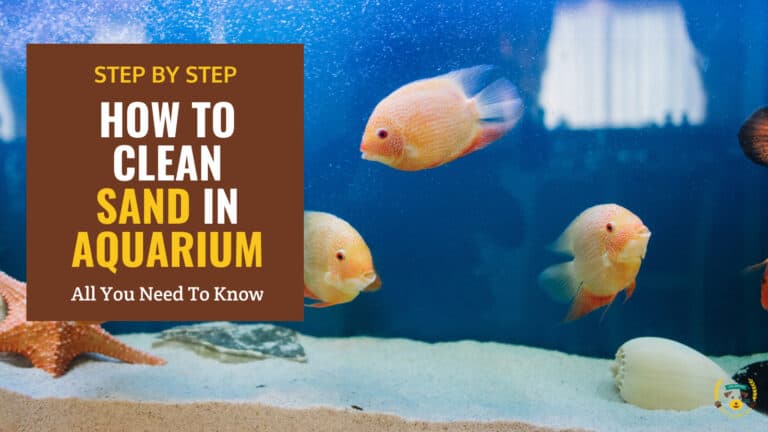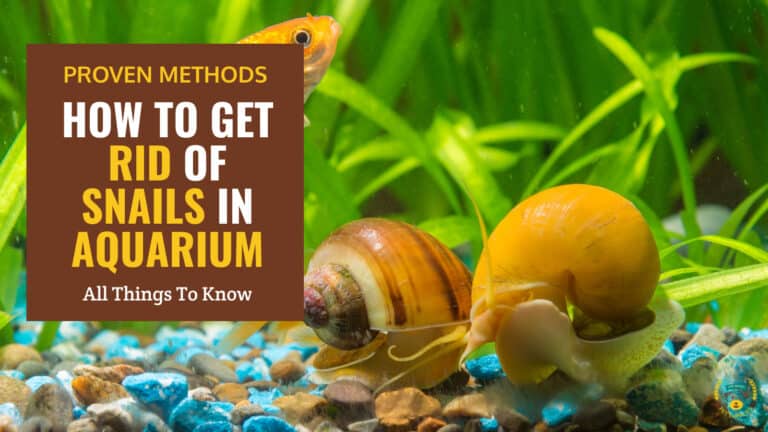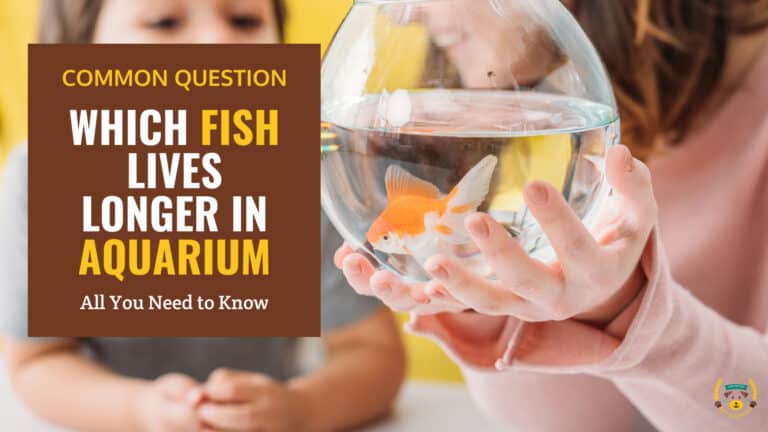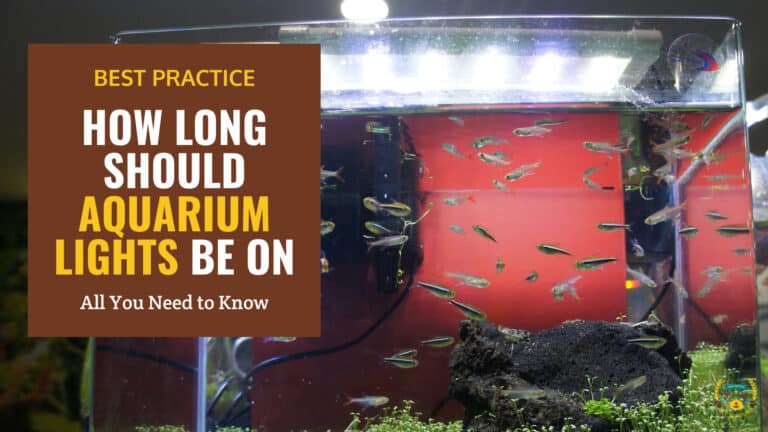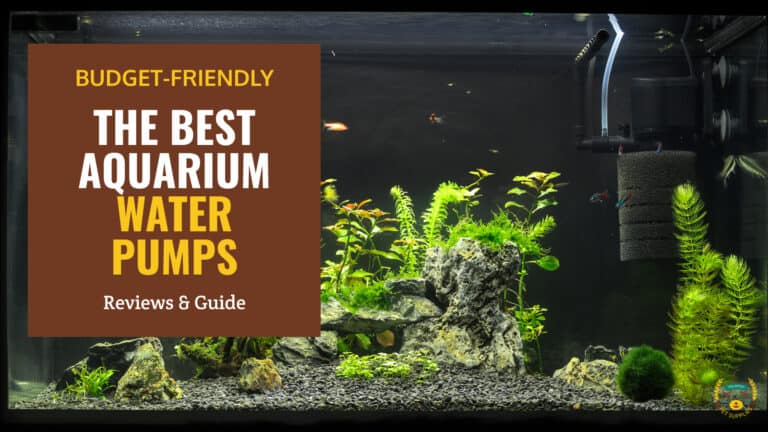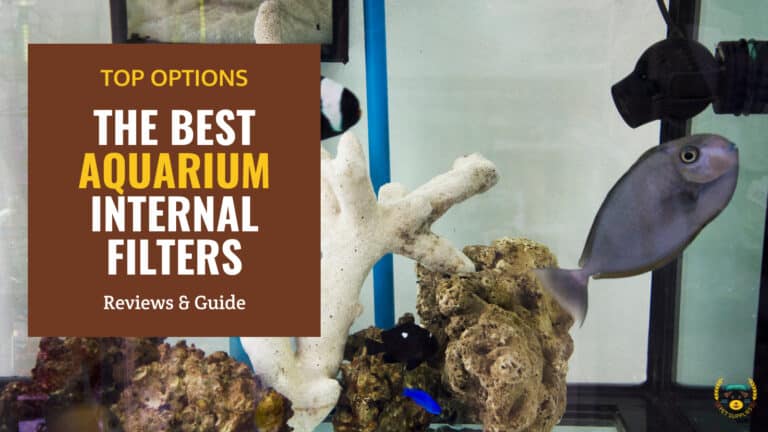The 10 Best Aquarium Heaters in 2025 Reviews & Buyer Guide
Last updated: April 16, 2024
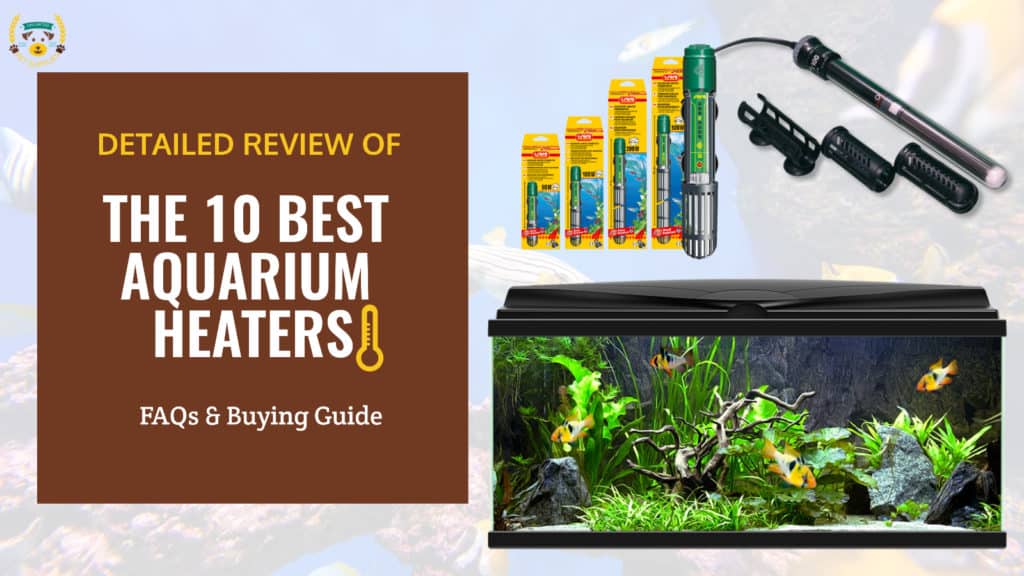
Summary
Our top pick for the Best Aquarium Heater is the Hygger Titanium Tube Submersible Aquarium Heater. This heater is made with durable and corrosion-resistant titanium, making it safe for both freshwater and saltwater tanks. It features a digital thermostat with precise temperature control, and it displays both the current and set temperatures in Celsius and Fahrenheit. The heater is also easy to install and maintain, and it comes with a two-year warranty.
Did you know that having an aquarium is good for your health [1]? However, did you know that the right heater for the aquarium is essential for the health of the fish? If you are fond of colorful fish swimming around, then either you already have an aquarium or are planning to get one!
Having a home aquarium is like bringing a small part of nature into your home. It is satisfying and peaceful to watch the fish in all their colorful glory. However, it is a bit challenging at the same time.
Aquariums are self-contained ecosystems that need certain specific parameters for the fish to thrive. One of the most important things is to keep the required temperature consistent. This is where aquarium heaters come into play. They are available in various designs and shapes and offer different features. You can choose the best and most reliable heater, depending on many factors, mostly related to the fish that you have or plan to have.
For your fish pets to be healthy, you need to carefully pick a heater from so many different types, sizes, wattages (watts per gallon of water), etc. However, the two most crucial factors to keep in mind are the type(s) of fish you want to keep and the tank size. Every fish type has specific needs some are easier to keep as we explained in this article, while others have special requirements. If you plan to combine many types, you will need to do more homework so as to guarantee the well-being of your beloved colorful buddies.
Choosing a heater among the countless models available on the market may give you a headache, especially if you are a person that doesn't know a lot about fish pets, and aquariums. Any mistakes could lead to disastrous results. No need to worry though, as we are here to help with our reviews of the ten best fish tank heaters and answer any questions that you may be asking yourself. By the end of this article, we hope that our readers will have acquired all the necessary knowledge to keep their little fishies and themselves happy.
Let's get started!
No Time To Read The Whole Article? No Worries. We’ve Done The Work For You And Compiled A List Of The Top Performers.
| Product | Features | Our Rating |
|---|
Related: Fish Tank For Beginners
Why You Need A Heater For Your Fish Tank?
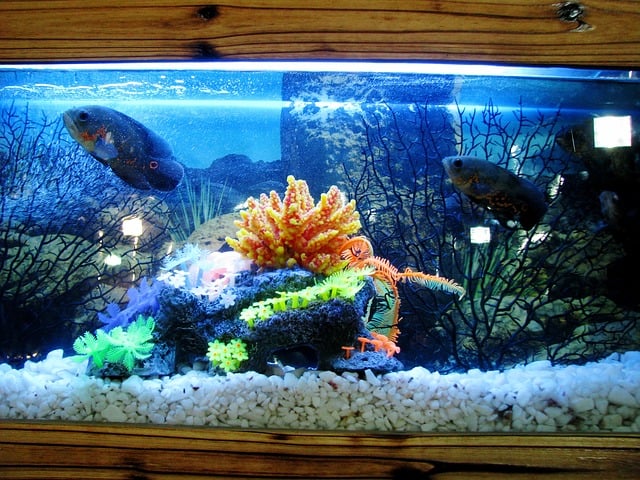
One of the most essential pieces of equipment in an aquarium is the heater. It plays a vital role in fish health and should not be neglected. The wrong aquarium heater size or bad placement can result in cold spots in the aquarium, potentially life-threatening to the fish.
For the well-being of your fish, the temperature in the aquarium is of great importance. Unlike mammals, fish cannot produce their body heat. Instead, they rely on the temperature of the water they live in to maintain it.
When they are out in the wild, the water naturally changes from cold to warm to hot or the other way around, but they can swim around till they find water with the right temperature. However, in an enclosed tank it is not possible. So even if you fill the aquarium with water at ambient room temperature there is no guarantee that it will remain so. A heater will help in maintaining the right temperature.
Keeping the water in the proper temperature range will help the fish to stay healthy. With a heater, it is possible to have tropical fish in cold winter regions. Heaters are essential to create a stress-free environment and prevent any sudden changes in the temperature.
Types Of Aquarium Heaters
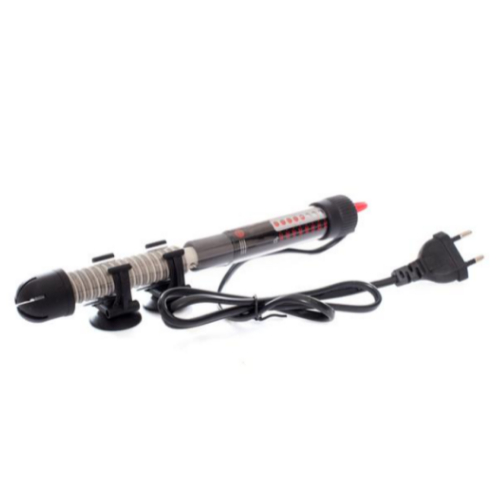
There are various aquarium heaters available nowadays, and depending on the type of fish and the size of the aquarium one can select a suitable heater. So let's discover them in more detail.
Immersible heaters
Immersible aquarium heaters (also called immersion heaters or hang-on heaters) have a heating element inside a glass tube that is immersed in water. They are a very common choice and are usually moderately priced. They use a suction cup to be hung on the side or back of the tank. These heaters can be controlled by an on/off switch or thermostat, but they do not provide a lot of temperature control other than the one set at installation time.
For an immersible heater to work properly and avoid cold spots in the tank, it is primordial to place it somewhere near a water current, preferably close to the water intake or outlet of the tank filter or pump. This will ensure that all the water inside the tank is evenly heated.
Submersible Heaters
Submersible heaters sit entirely inside the tank. They are used to maintain the temperature of a water-filled tank. The heater is fully submerged in the water and has an electrical heating element that heats up as current passes through it, thereby raising the surrounding water temperature. Even though you can place them anywhere, you should avoid crowding the fish.
The most common type of submersible aquarium heater uses a single resistance wire wound around a bobbin or coil former. This design provides for good thermal efficiency but requires that the entire length of the heater be immersed in the water.
In-line Heaters
An in-line aquarium heater (external heater) is placed between the tank and the filter. It requires more space and is more effective for larger tanks but it can be used with smaller ones as well. In-line heaters provide better heating of the aquarium water since all the water goes through the heater before going back to the tank. They use a thermostat that shuts the heater down once the desired temperature is reached.
In-line aquarium heaters provide unlimited installation options. They can be installed externally, with an external canister filter, or in an external sump tank design. It's an ideal choice for the more demanding picky aquarists that only want to see the beauty inside their water tanks. All the pumping, filtering, and heating elements in addition to the sump tank can be kept out of sight, giving the tank a cleaner and more beautiful and pleasing look. In-line heaters may not be the cheapest heaters out there but the possibilities they offer largely justify their prices.
In-sump
As the name suggests, an in-sump heater can be installed in the sump tank itself. It works best for large aquariums because it requires more space and is more expensive than other types. This type of heater can be installed within a sump tank. Cold water goes from the filter into the heater before the warm water goes back into the aquarium. As with in-line heaters, in-sump heaters offer more esthetic benefits than other types of heaters. They do a good job too, as the water in the aquarium is evenly heated; once the specified water temperature is reached, the heater is turned off and only serves as a conducting tubing until heating is required again.
Substrate
These heaters are not very common as they are not the easiest to install. Generally, a heating cable is put along the bottom panel of the tank in curved lines and then covered with the substrate.
Substrate aquarium heaters are used in aquaria to provide a constant temperature environment for the fish and other aquatic life. Usually, the heater is either placed at or near the bottom of the aquarium tank with water flowing over it so that the heated water rises through the tank and warms up the surrounding cooler water.
One of the most significant advantages of using a substrate aquarium heater is that it can promote the growth of aquatic plants because it pushes the nutrient-rich water towards the roots. In addition, substrate heating provides perfect heating of the aquarium water because the heating element covers the whole superficies of the aquarium. The only downside of this heater type is that it requires a lot of work, as it may be difficult to install and maintain.
Things To Look For In An Aquarium Heater
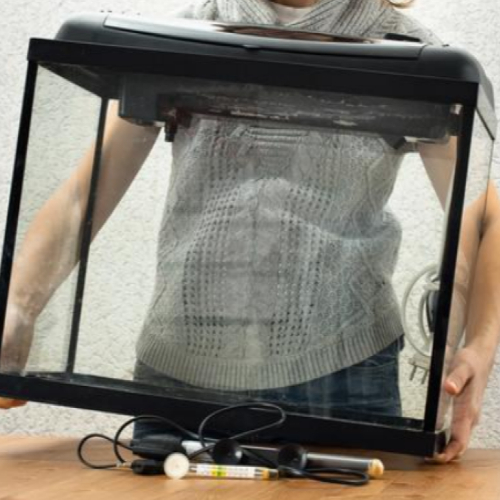
While choosing a fish tank heater, you might be asking yourself the following questions: What should I be looking for when buying a new aquarium heater? What are the best features of each type and what do they offer that others don't? Also, how much does it cost? Is there anything else I need to pay attention to? Answering all those questions is no easy task; that's why we will try to help. First, you need to know that there are many factors that you should take into consideration. Let's talk about the most important ones!
Safety
The first thing you have to consider before purchasing an aquarium heater is safety. You can buy any kind of aquarium heater but make sure that it has been tested by independent laboratories. The reason behind this is that some products may contain dangerous chemicals or even toxic substances which could cause serious health problems if used improperly. If your heater doesn't meet these requirements then you shouldn't use it in your home.
Usually, it's preferable to choose a good quality product from a renowned brand as these can be much more reliable than other unknown manufacturers. Quality always comes with a price, but it's an investment you won't regret. For the safety of your fish and that of your home and family, it's a must to invest in the best quality heater you can afford. Don't even consider going for the cheapest heaters as they may even cause fires or electric shocks. After all, heaters are electrical appliances that go into the water and produce heat. Getting the best heater you can afford is the best thing to do.
Moreover, some quality heaters have a heat guard, a plastic enclosure that surrounds the heater and prevents the fish from getting stuck behind the heater (which could lead to its death). If your heater offers this feature, then it's an extra layer of safety for the tank inhabitants.
Another critical safety feature you need to be looking for in your heater has to do with the material of the outer cover of the heater. If you opt for a glass heater, make sure it is shatter-proof so as to prevent damage and harm to both your aquarium and fish. Titanium heaters are usually much more expensive but they are perfectly safe for your fish; they are also corrosion and saltwater-resistant. The performance is also generally better than that of a glass heater as titanium allows better heat dissipation and faster water heating which will eventually translate into lower electric consumption. If you can afford the higher price, you will not regret going for a titanium heater.
Water Temperature Control
The temperature of the water in your aquarium is vital to the fish's health and well-being. The ideal range for a freshwater aquarium is between 78°F and 82°F. If you live where it gets cold or have an air conditioner running all day long, you may need to raise the temperature slightly above this range. Most, if not all, heaters are equipped with temperature controls that allow you to specify the tank water temperature. This feature is very useful because it will enable you to raise or lower the temperature as you wish depending on the type of fish that you have (different fish types prefer different water temperatures). Also, this can help in case you need to raise the temperature to treat a disease or if it needs to be lowered so as to stimulate breeding. Also, most heaters have an automatic switch that automatically turns the heater on and off as needed. Some heaters even come with dual temperature sensors to give accurate readings and provide an extra layer of safety if one of the sensors fails.
Wattage In Relation To Aquarium Size
Another essential factor has to do with the relation between the heater's heating capacity and the size of your tank (usually referred to as aquarium heater wattage per gallon). Using too little or too much wattage can do much more harm than not using any heater at all.
To get even heating and maintain a constant temperature there must be enough power. If a 100-gallon tank has only 100 watts, it is not enough because it is only about one watt per gallon. In the same way, a 10-gallon aquarium heater is too small for larger tanks. You need to calculate the heating capacity your heater needs to provide for the aquarium water to be evenly heated. To get the most suitable heater for your tank you can rely on a rule of thumb that states that, on average, you need five watts of electricity for every gallon of water inside the tank. In other words, if your tank has a capacity of 20 gallons, the heater wattage needs to be five times the capacity and the total wattage has to be 100 watts; in the case of a 40-gallon aquarium, the heater wattage must be 200.
This is in case you want to keep the water temperature ten or fewer degrees over the ambient temperature. If you wish to keep the aquarium temperature above ambient temperature by more than ten degrees, then the aquarium heater wattage per gallon has to be doubled; so instead of five watts for every gallon, you need ten watts per gallon.
Also, if you have a large capacity aquarium that requires, let's say a 400-watt heater, it will be preferable to get two heaters (of 200 watts each) placed in different locations in the tank. This will ensure that the heating is even in the whole aquarium and that any cold spots will be eliminated. Also, to ensure the heating is more effective, you need to make sure that the aquarium lid is down to prevent warmth loss or cooling through evaporation.
Here is an informative video (9 minutes 13 seconds) from Blue Aquatics that discusses the things you must know before using your aquarium heater.
Cost
The cost of the water heater you want to buy depends on your budget. How much money can you invest in the heater? Also, how much is running your heater going to cost? How much will it add to the electricity bill? These are all legitimate questions to ask if you don't want to have any bad surprises.
As we have stated before, quality comes with a price; it's not cheap. So the initial investment in the heater is very important. A good quality heater will serve you for a longer period of time; it's also safer, as it has successfully gone through extensive testing to make sure it's safe for you and your fish. If you buy a cheaper heater, it's most probably going to break and need to be replaced or even worse, cause your fish to die or start a fire in your home. We can not stress it enough: Always stay away from the cheapest or unbranded heaters!
Concerning the electricity cost, it depends on how long the heater works on a daily basis. Let's take a 300-watt heater as a reference. The daily, monthly and annual consumption will be estimated between the periods of six (as the minimum) and ten hours (as the maximum) of daily operation. Every month your 300-watt heater will consume between seven and eleven dollars of electricity, which translates into a total annual cost of about 82 dollars for six hours of daily use to around 136 dollars for ten hours of use. This example could be used as a reference to calculate the consumption of other heaters of different wattages.
Best Aquarium Heaters
Based on our research, testing, and experience, below is our final list:
Hygger Titanium Tube Submersible Aquarium Heater
A fully submersible titanium aquarium heater that doesn't have any glass parts. This is one of the safest products you can get because you will not have to worry about it breaking or shattering into pieces that can harm the fish.
This product is available in 50W and 500W models suitable for tanks with a capacity between 10 and 120 gallons. You can set the temperature precisely between 32 and 104 degrees with the digital thermostat.
Pros
- Made with titanium. Very strong and anti-corrosive
- Accurate setting and maintenance of temperature possible
- Dual LCD gives all the information
Cons
- Though very effective it is a bit highly-priced (but worth the price)
The heater displays both the current and the set temperatures in both Celsius and Fahrenheit. Monitoring the heat levels is quite an easy and effortless job. You will find it very accurate and reliable in terms of performance and effectiveness.
With the two suction cups included in the pack, it is quite easy to install. It is better to place it near a strong water flow for even heat distribution. Its accuracy is of a high level at plus or minus 0.5 degrees. You can control the level of heat and automatic shut-off will prevent any overheating.
There is no glass in this heater and it is made with titanium. It is a high-quality product with exact settings. The accuracy is of a high standard and ensures consistent and even levels of heat.
Eheim Jager Aquarium Thermostat Heater
The Eheim Jager is simple and elegant in design and very effective at heating the tank. The product is available in a wide range of wattages starting from 25W to 300W. It is suitable for tanks with a capacity of up to 220 gallons.
The Jager's design is simple with a slim body. This product is fully submersible and the rod is completely watertight. In addition, it is enveloped by a unique and robust laboratory standard glass from all sides making for a wider heating surface and a better protective shield.
Pros
- TruTemp dial allows for temperature adjustments
- Simple design with shatterproof glass
- Includes a mounting bracket and suction cups for installation
Cons
- Quite long and requires a continuous flow of water
The heater has an excellent safety feature which is the automatic dry run-off, also called the thermos safety control. Its temperature control system is adjustable and can be set between 64 and 95 degrees Fahrenheit which is quite a good range. The product has a long cable of about six feet and has a 3-year warranty.
This fully submersible heater is quite effective and has excellent safety features. If the water level is too low, it stops working. The on and off indicator lights are easy to follow for monitoring.
Aqueon Pro Adjustable Aquarium Heater
This is a top-of-the-line fish aquarium heater and you will be able to keep your fish happy and healthy. It has an electronic thermostat which is very accurate. You can set the temperature anywhere between the wide range of 68 to 88 degrees and it will maintain an accuracy of 1 degree plus or minus.
This heater is great for both freshwater and saltwater fish. It is very convenient to monitor because of its precise temperature dial. The Aqueon is a submersible aquarium heater and the best part is that it is shatter-proof. So both your heater and your fish will remain safe.
Pros
- A durable and shatterproof, fully submersible heater
- Accurate and adjustable thermostat
- Automatic shut-off safety feature
Cons
- Heaters with more wattage are too long
The product is available in a range of wattages and it is pretty easy to choose one which will be perfect for your aquarium. There is an LED light that remains on at all times. When the water cools down, the LED turns on to show that the heater is working and then it turns green when it is off.
Its automatic shut-off safety feature is also quite convenient and will not allow overheating. This product is very durable and will last for a long time. You should keep it near the filter outlet to get the best results.
Fluval M Submersible Heater
This heater is a fully submersible one with an accurate temperature sensor. It has a temperature dial you can set to the desired number. It is recommended to set the temperature and then adjust based on thermometer readings for better results. However, this heater is known for its stability maintaining consistent water temperature in the fish tank.
The product is available (on Amazon) in 50, 100, 150, and 200-watt variants. Like the Fluval E Electronic Heater, there is a visual alarm that shows when the temperature of water changes from what you have pre-set. In addition, the color of the display changes to let you know immediately.
One of the best features this product has is the integrated heater guard. It protects your fish by not allowing them to come in contact with heat.
Pros
- Made from high-density ceramic
- Better Temperature Control remains stable once set.
- Reflective technology of the outer casing makes the heater invisible.
Cons
- You will need a thermometer to fine-tune.
The heater also has fast heat technology which will bring the temperature to the required level quickly. The heater will give you accurate temperature readings unless the ambient temperature is extreme. The safety shut-off will prevent overheating and the item does not take up much space thanks to its slim mounting bracket.
The product has a 3-year warranty which is quite satisfactory. With its models available in different wattages, you must check which one is most suitable for your needs. It is fully calibrated when it arrives. Its user manual gives all details about the product and its usage.
SZELAM 25W Mini Fish Tank Heater
You may only have a few fish and the tank could be small but you still need a convenient heater for the aquarium. This is an excellent heater for small tanks with a capacity of 5 gallons or less. Once you buy it, all you have to do is place it inside the tank and start.
The heater comes with pre-set heat settings which range from 73 to 82 degrees Fahrenheit, ideal for most tropical fish. This is a mini heater but it is both durable and reliable. Furthermore, it is entirely safe for the fish.
Pros
- Has ABS covering, sandy quartz filler, and MCH Alumina ceramic heating system
- Comes with two artificial plants for decoration
- The product has certifications by CE, ROHS, and FCC
Cons
- At times, the heater produces mild electric currents
In small tanks, there are more chances of fish rubbing against the heater. This one has an outer covering of ABS plastic which keeps the fish safe and is also shatterproof. An affordable heater with some great features meant explicitly for smaller tanks.
The product comes with suction cups for the initial setup making it easier to install. In addition, it has a Smart Control feature that uses an accurate temperature sensing probe and an automatic heating system. It will switch on and off to keep the temperature constant in an energy-efficient way.
A small heater with some smart control features that are both affordable and efficient. You just need to place it, switch it on, and the machine does the rest of the work.
Cobalt Aquatics Neo-Therm Aquarium Heater
The Cobalt Aquatics Neo-therm is a very modern-looking stylish aquarium heater with excellent performance! It has a unique and elegant design that goes well with the aesthetics of an aquarium. The heater offers a one-touch control feature and is very handy. Neo-Therm is very safe for fish and is reliable as well.
This heater is among the best aquarium heaters for both freshwater and saltwater tanks. You will get a high level of accuracy with this heater. The temperature will fluctuate only between a range of plus or minus 0.5 degrees, so it is easy to keep the tank's temperature stable.
The LED display gives both the tank temperature and the temperature set by you. The temperature can be adjusted between 66°F to 96°F and this is enough for most aquariums and is competitive by industry standards.
Pros
- Stylish design with a flat and sleek look
- Highly accurate electronic thermostat
- A one-touch control system is easy to operate
Cons
- It is not a digital aquarium heater
There is an in-built safety feature that makes the heater stop working before it overheats. It is shatterproof and will not break even under extreme pressure. The heater has a sleek and flat design that does not take much space in the aquarium.
This heater offers not only a great design but equally better functionality as well and has several useful features.
If you are looking for a beautifully designed yet effective aquarium heater, this is the better option. It has some great features and is quite convenient to use.
Tetra Submersible Aquarium Heater
This is one of the most popular aquarium heaters for smaller aquariums. It is available in 50 watts and 100-watt variants. Tetra is a better fit for aquariums with a capacity of about 30 gallons on Chewy. For 50 gallons, consider this Tetra Submersible Heater With Electronic Thermostat on Amazon. It is a fully submersible heater and you can place it either horizontally or vertically as well. With smaller aquariums, finding the right space is a problem but you will not have this problem with this heater. You can place it wherever you find space. There is an in-built electronic thermostat that maintains the temperature at 78 degrees Fahrenheit. This is an ideal temperature for most tropical fish.
Pros
- In-built thermostat with red and green indicator lights
- Can be installed vertically as well as horizontally
- Perfect for smaller-sized aquariums
Cons
- Standard temperature. It remains at 78 degrees F
The light indicator is red when the water is being heated and then turns green when the required temperature is achieved. Small aquariums should have small aquarium heaters; otherwise, you may end up with unnecessary electricity bills and in some cases, extreme overheating of water. Overheated water can hurt and even kill fish.
This is a low-wattage aquarium heater that is perfect for smaller tanks with up to 30 gallons. It keeps the temperature at 78 degrees F without needing any adjustments.
Aquatop Quartz Glass Submersible Heater
If you are looking for an affordable and no-frills aquarium heater, then you can choose this product. It will get the job done effectively without putting a dent in your wallet. This is a fully submersible product and is available in a range of sizes and wattages.
50W is enough for an average small fish tank or you can go for a 200W aquarium heater if you need more power. You can place the heater anywhere in the tank and set the temperature between a range of 68 and 93 degrees Fahrenheit.
Pros
- High-quality and durable glass construction
- Very easy to monitor and read temperature settings
- Affordable price with great features
Cons
- Temperature readings are not accurate
You can easily maintain the ideal temperature because it will automatically turn on again and heat the water as soon as the temperature drops below the set level.
This heater is suitable for both saltwater and freshwater use. An easy-to-read thermometer will help you track the settings and adjust the temperature. This product is made with high-quality insulated glass that is quite strong and safe. Suction cups are included with the product and make for easy installation. Installation is quite easy and does not take much time.
Marineland Precision Heater
Maintaining the right temperature in an aquarium depends on the heater and with this one you get great value for the money you spend. It comes with various affordable options that are available in 8 different sizes. For example, you can get a 50-watt aquarium heater going up to 400W. Whatever the size of your tank, you will find a suitable heater for it.
Moreover, you can even put two of these in large tanks and ensure proper and even heating because of the affordable price. If you need to change the temperature for any reason, there is an adjustable temperature dial that allows you to set the required tank temperature.
Pros
- Available in a wide variety of sizes and wattages
- Mica core for better transfer of heat
- Automatic turn on and off with a thermal switch
Cons
- The thermostat may not work accurately all the time.
This heater can heat a tank with a capacity of 125 gallons. Its thermal switch shuts off automatically when it reaches the set level and starts again when the level goes down. It is very effective thanks to the advanced heating element.
It has a mica core that enhances heat transfer and durability. In addition, there are three windows in the mounting bracket making it easy for you to check the temperature anytime you need to.
You can keep the fish in your aquarium at their healthiest with this heater. The Mica core in this product is effective and ensures consistent heating throughout the tank.
Hydor In-Line External Aquarium Heater
This aquarium heater is technologically very innovative. It is an external aquarium heater with PTC technology. PTC heating element is self-limiting and provides maximum safety against any overheating. This is best used on water lines coming from sumps or filters. Submersible heaters are great for small and medium tanks, but external heaters are more efficient for large tanks.
This product is suitable for freshwater and saltwater fish alike. It is an in-line heater (External) that warms the water before it enters the aquarium. It is very convenient and has an accurate electronic temperature control system.
Pros
- Suitable for both freshwater and saltwater aquariums
- PTC technology ensures the maintenance of ideal temperature
- Easy to install and use
Cons
- There is no visible temperature display and can be difficult to adjust
The product has to be installed in a vertical position but this is easy, and once installed, you can rest easy because your fish will be safe. The heater will maintain the ideal temperature without overheating and perform well consistently.
External heaters are convenient for large tanks or places where the water could be very cold or very hot. You can hook it up to the filter line, or the sump and water will reach the tank at the right temperature.
Frequently Asked Questions
Where Should You Place the Aquarium Heater?
The placement of the heater in the aquarium is of prime importance. Submersible heaters are best placed horizontally near the bottom. However, some can be installed vertically. For the best results, place heaters near a filter inlet or outlet.
You can put them near a circulation pump or air pump as well. Heaters should be away from any decorations so that the water can flow freely. As the water flows in front of the heater, it will become hot and spread this heat to other parts. It is always better to have more than one heater in tanks and place them on opposite ends. This prevents any cold spot formation and results in more thorough heating.
One should understand that heat travels in three ways, and an aquarium heater controller should benefit from them.
* Conduction: heat spreads from hot to cold areas. Though water is a better conductor of heat it is not very efficient in a tank.
* Convection: when water becomes less dense on heating, it rises, and cold water replaces it.
* Circulation: this is how heat transfer takes place in an aquarium. The filter pump will circulate and mix the water to spread heat all around.
You should place the heater near the water inflow or next to an air pump where water flows past the heater. These are the best locations for quick and even spreading of heated water in the entire tank.
How Accurate are Aquarium Heaters?
The accuracy of aquarium heaters is an important issue that affects everyone who owns one in order to maintain a stable temperature for their fish. The success of your fish tank depends on the accuracy of the temperature you are providing. If you have a temperature error of a few degrees Fahrenheit, your fish may not be healthy, and they may die.
How can you tell how accurate your heater is? You can use aquarium thermometers to measure the temperature in your tank. Those are very cheap, so it would be good to buy a few to use in the fish tank and keep as spare. If your aquarium temperature corresponds to the temperature set on the heater, then everything is fine. If there is a difference between the two readings, then your heater may be faulty and need to be replaced. Once again, a good quality heater from a reliable brand is more likely to provide accurate and constant water temperature.
How Many Heaters Do I Need?
The number of aquarium heaters you need depends on the size and type of your tank. If you have a small, 10-gallon or smaller fish tank with an average water temperature between 70°F to 80°F, then one heater will be sufficient for most applications. However, if you own a large-capacity aquarium, then it would be better to install more than a single water heater; a minimum of two is recommended. This type of aquarium is large and contains a lot of water, so it would be more practical to place two (or more) heaters in different spots of the aquarium.
The wattage capacity doesn't need to change though; for instance, if you need 600 watts of heating for your large tank, you could opt for two 300-watt or even three 200-watt heaters. The warmth will be evenly spread through the whole aquarium and cold spots will be gone. It is always recommended to keep one or two heaters as spares. If one of your heaters fails, you will have a replacement to use immediately without risking the health of the fish by taking the time to go out and buy new ones.
How Do I Know If My Aquarium Heater Is Working?
Once you place the heater in the aquarium it is easy to just forget about it. You should check from time to time to ensure that it is doing the job. Here are a few things you can do:
Check the indicator light on the heater. Find out if it is only the light or if the heater has some other malfunction. Use a thermometer or even get your hands wet to check the temperature. First, do the check before turning on the heater and then turn on the heater and give it some time. Now check again.
Sometimes the heater automatically changes the temperature. Set the heater at a higher level and then check after some time.
One better way to check is by using a torch to watch the water flow around the heater. If it looks blurry, then you know that it is working.
Are Aquarium Heaters Dangerous?
Like other electrical equipment, aquarium heaters are also safe and unsafe, depending on several factors. Therefore, one needs to take proper precautions and safety measures both before and after installation.
Buying quality products is always better in the long run. Don't choose a heater just because it is cheap. Right wattage is equally essential. Excessive heat can cause severe health problems to the fish and can even harm the aquarium.
In rare cases, aquariums have been known to burst due to this problem. Read the manual and understand it fully before installing the heater. Positioning and placing them correctly is essential. Check regularly to see if it is working well and if you notice any sign of damage, replace it immediately. Even a small faulty part in the heater can trigger major problems.
How Often Should I Replace The Aquarium Heater?
Though there is no set rule, generally, a quality heater can work well for up to 2 years and sometimes even longer. If it is working perfectly, there is no need to change or replace it. If any part is damaged, especially the thermometer, which gives wrong readings, then it is time to replace the heater.
You must carry out regular checks to ensure that the heater is working effectively. Any kind of problem can lead to a very bad effect on the fish. If you find the temperature fluctuating too much and too often, you must change it immediately. If you are careful while using and regularly maintaining it, you will not have to replace the heater very often.
Final Thoughts
Are you still wondering if you need an aquarium heater? Most commonly, aquarium fish are of the tropical variety. Therefore, a heater is necessary, especially in colder areas. Without adequate heating, fish can become unhealthy and even die. Heaters are also handy tools to use if the fish get sick thanks to the control they provide over the tank water temperature.
Too cold or too hot water can make the water uncomfortable for the fish. As a result, they will become less active and develop health problems. So, yes, you do need a heater. However, deciding this is only the first step. Now you will need to find the right heater to get the right results. We have tried to cover all the factors that you need to consider before you make your final choice. These include the type of fish, the size and placement of the aquarium, etc.
As with other fish tank components, heaters are made according to different tank sizes and types (freshwater VS saltwater aquarium), and you must choose carefully to suit your needs. There is no point in wondering what the best aquarium heater is; instead, look for the most suitable one. What works well for a reviewer might not be the best choice for you and your fish pets. You should make your research based on specific personal criteria so as not to make the wrong choice and cause harm to your beloved pets. You can be sure, though, that you can find your heater in our list of the ten best aquarium heaters; you just need to give it a little thought to know which one is more suitable for you.
With the information provided in this same article, we are sure that you are in a good position to decide and give your fish a warm and comfortable home. Now, it's time to gear up with the necessary equipment and confidently enter the world of colorful and beautiful aquaria.
References:
- Discover The Surprising Health Benefits of Keeping an Aquarium. The Spruce Pets. Retrieved from https://www.thesprucepets.com/health-benefits-of-aquarium-fish-1381298











